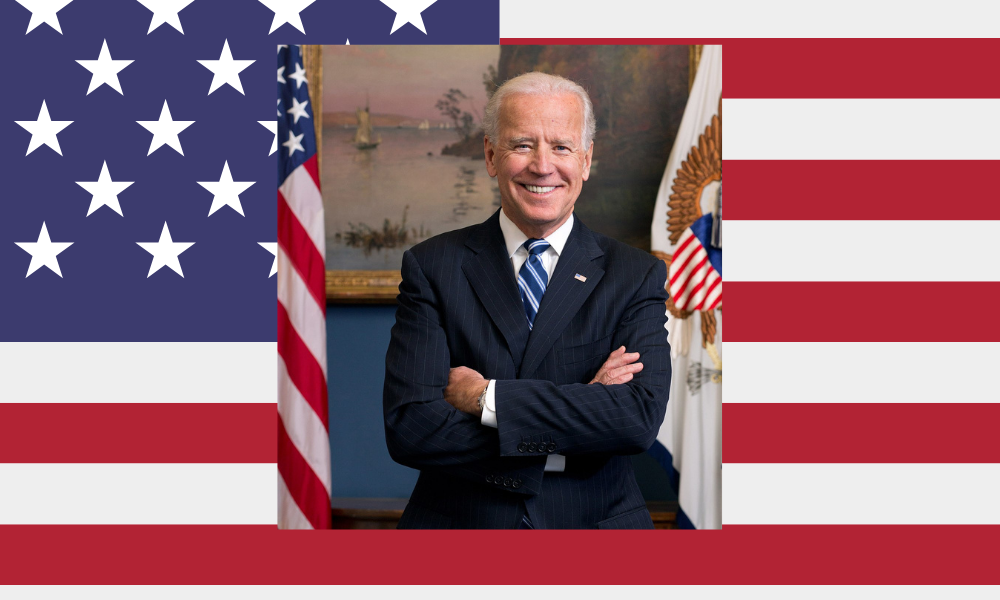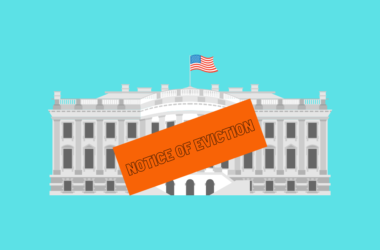Just a day before the election, Joe Biden is holding a firm national lead over President Donald J. Trump. Since the start of the campaign, the president has been struggling to keep his numbers up and is slipping in several key swing states he easily won over Hillary Clinton in 2016.
Skeptics might reference the confidence Democrats had in Clinton’s victory four years ago. Instead, Trump swept the Electoral College by 77 votes, and misleading polls led shocked media pundits to exclaim election data is dead.
Why should voters believe in a Biden victory? The 2020 race to the White House is different from 2016 for many reasons. The changing American electorate, increasing political polarization, the continual threat posed by the coronavirus pandemic and the state of the economy are all critical factors to examine.
Oddly enough, one of the clearest indicators for a Biden win is his poll numbers. As of Oct. 29, his lead over Trump is approximately 3 to 3.5 times greater than Clinton’s lead four years ago.
NBC News National Polling average ranks Biden at an 8.2% lead above Trump. At this point in the 2016 race, Clinton was only leading by 2.2%. Real Clear Politics shows Biden holding a solid 7.5% lead over Trump and FiveThirtyEight gives Biden a 9% lead.
While Biden’s national lead has slightly narrowed since the beginning of October, he holds steady in many key swing states that Trump took from Clinton.
Minnesota, Virginia, New Hampshire, Wisconsin, Pennsylvania and Michigan all show a substantial lean towards Biden. Polls have also shown a slight Biden lead in North Carolina, Georgia, Arizona, Nevada, Virginia, Nebraska, New Mexico and Ohio.
Trump’s only solid lead in the critical swing states this election seems to be in Texas. Since we know that polls have a natural margin of error, Trump could win some of the toss-up states or ones where Biden shows just a slight lead.
However, a Trump win in the Electoral College is statistically unlikely. Trump would need to win nearly all of the current battleground states to reach the necessary 270 electoral votes.
American Voting Behavior
Over 80 million Americans have already voted in this presidential election. This is more than 58% of the total votes cast in the 2016 election. What is driving a higher number of Americans to the polls?
While it is difficult to prove causality, there is a lower opportunity cost of voting in this election. The continuous threat posed by COVID-19 has led many states to allow early voting and vote by mail options, making it easier for people to cast their ballot.
How will 2020’s voter turnout look? The growing problem of political polarization confronts Americans. Voters are increasingly divided along party lines, which we also saw during the 2018 midterm elections.
Seminal scholarly research, like the Michigan Model, shows that party identification acts as both a perceptual filter for how we see the world and a cognitive shortcut to help us make decisions.
Since most of the American electorate is uninformed when it comes to government and policy, the labels of Republican and Democrat help voters decide who to cast their vote for and make quick policy choices. While it is common to think there is a large number of independent voters up for grabs, data shows otherwise.
Most Americans who self-identify as political independents actually lean toward one of the two major parties. True independents tend to avoid politics altogether, and it is highly unlikely that they will be swayed by last minute canvassing by either Biden or Trump.
The high number of early voters and mail-in votes we are seeing indicate that voter turnout among identifiable partisans will be significantly higher than it was in 2016. While Trump has been trying to win Black and Latino votes late in the game, he is unlikely to pull them away from Biden. On average, 90 to 95% of Black voters are loyal Democrats.
It seems Biden is holding similar polling among minority groups—African Americans, Latinos and Asian Americans—as Clinton did in 2016.
So why are his polling numbers substantially higher than Trump’s? If the data holds true, Biden may be pulling disenfranchised conservative white voters away from Trump or winning back conservative-leaning liberals who left the Democratic party during former President Barack Obama’s administration.
Trump’s response to the shooting of unarmed Black civilians, his vocal support of White supremacist groups like the Proud Boys and militarization of the police force in response to public protests alienated already disenfranchised conservative voters. Furthermore, Latinos and Asian Americans are also characteristically loyal to the Democratic party.
While Trump may be able to sway more conservative, religious votes from communities of color, the overall demographic of Biden and Trump’s support bases should remain constant.
Scholarship indicates the majority of Trump’s support base is made of uneducated white voters, particularly rural voters, Southerners and Evangelicals. In contrast, highly educated white voters and a growing number of support from people of color compose the Democratic party’s base.
Over the past few years, the country has seen a shift among party lines in the electorate as the Democratic party narrows its focus on inclusivity, diversity and minority identity politics. Simultaneously, the Trump administration appeals to disenfranchised white voters who perceive a status threat from increased immigration levels, globalization and the growing minority electorate.
Despite the party’s staunch ideological divide, most American voters list the economy as their primary concern.
The state of the economy
At the start of 2020, unemployment levels were at a low of 3.6%, gross domestic product levels were high and equities markets were growing. Fast forward three months, COVID-19 created a massive public health crisis and pushed the U.S. into an economic recession. In April, the U.S. unemployment rate surged to a high of 14.7%.
The World Economic Forum estimates that GDP plummeted at an annual rate of 32.9%. To put this in perspective, this is the most significant economic hit since the Great Depression.
Seven months later, many Americans are still struggling to get by as the current national unemployment rate is 7.9%.
While Americans often credit or blame the sitting president for the economy’s state, the president actually has little control over it. Voters often forget that Congress has the power of the purse.
In reality, the economy is a complex amalgamation of many factors not limited to but including inflation rates, aggregate demand, taxes, domestic spending, consumer confidence, productivity, exchange rates, real disposable personal income—the list goes on.
Will Americans consider this when they decide to commit to Biden or Trump? It is highly unlikely.
Scholarly research shows that the current times have the lowest opportunity cost to information, so voter apathy or voter misinformation or lack of information could be attributed to numerous factors. There are many theories, but no way to definitively prove causality for voters not knowing enough about politics or in this scenario, crediting or discrediting the incumbent for the state of the economy.
Americans are also characteristically myopic and vote retrospectively. They vote to either reward or punish the incumbent.
The 2020 race has been filled with Trump’s Mueller probe drama, controversial rhetoric, reminders of Trump’s racist and misogynistic remarks, Biden’s awkward blunders and gaffes, tweets and social unrest. But with all that has passed throughout the year, the economy remains the most critical factor to voters.
Since the American electorate is shortsighted, they often forget about major events throughout a presidency and tend to focus more on very recent events and how they measure their wellbeing. Often, voters ask themselves, “Am I better off now or before?” and vote based on those emotions.
Where are we now?
In 2016, Trump’s self-branding as a Washington outsider that would shake up the establishment appealed to many conservative voters. Four years later, he has failed to deliver on many of his key policy promises, like his promise to tax the rich, repealing and replacing the Affordable Care Act and forcing Mexico to pay for the U.S. border wall, damaging his chances for reelection.
His national approval rating range is a low 44% to 46%. The average approval rating for U.S. presidents is 53%.
Given the state of the economy, Trump’s low polling numbers and his low national approval rating, most signs point to a Biden victory. All the former vice president needs to do is maintain his lead in the majority of swing states to seal the election.




